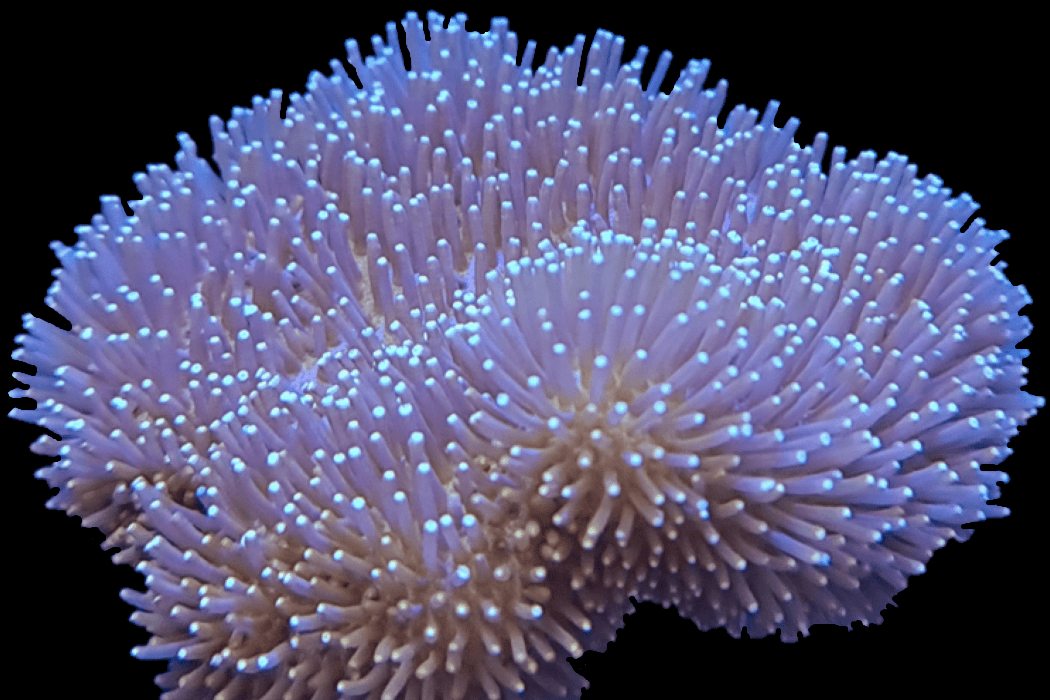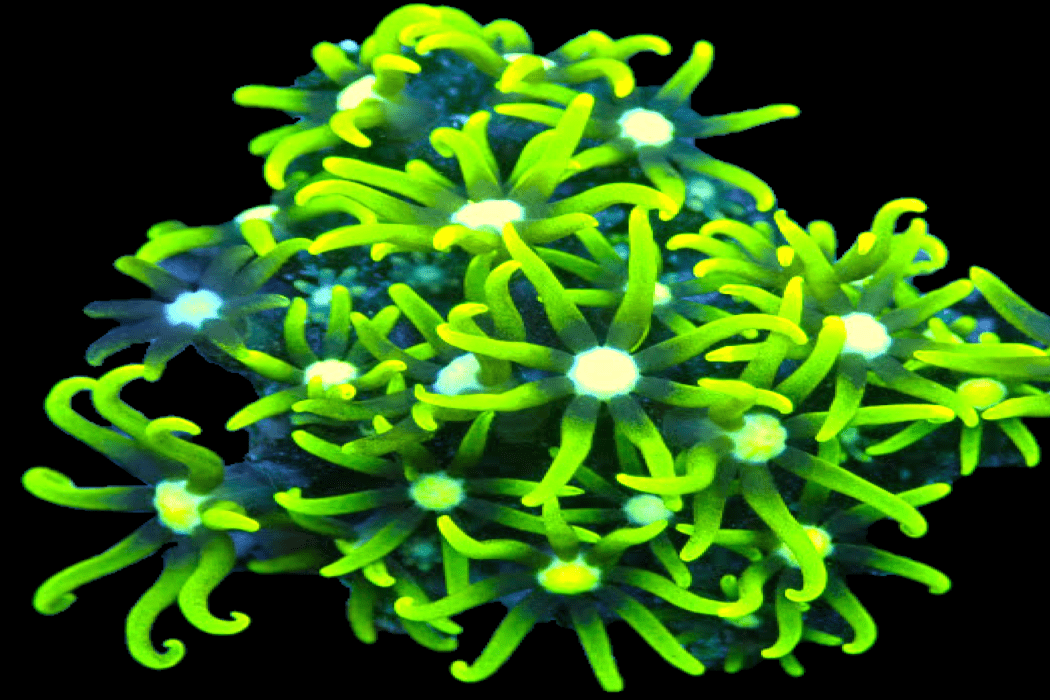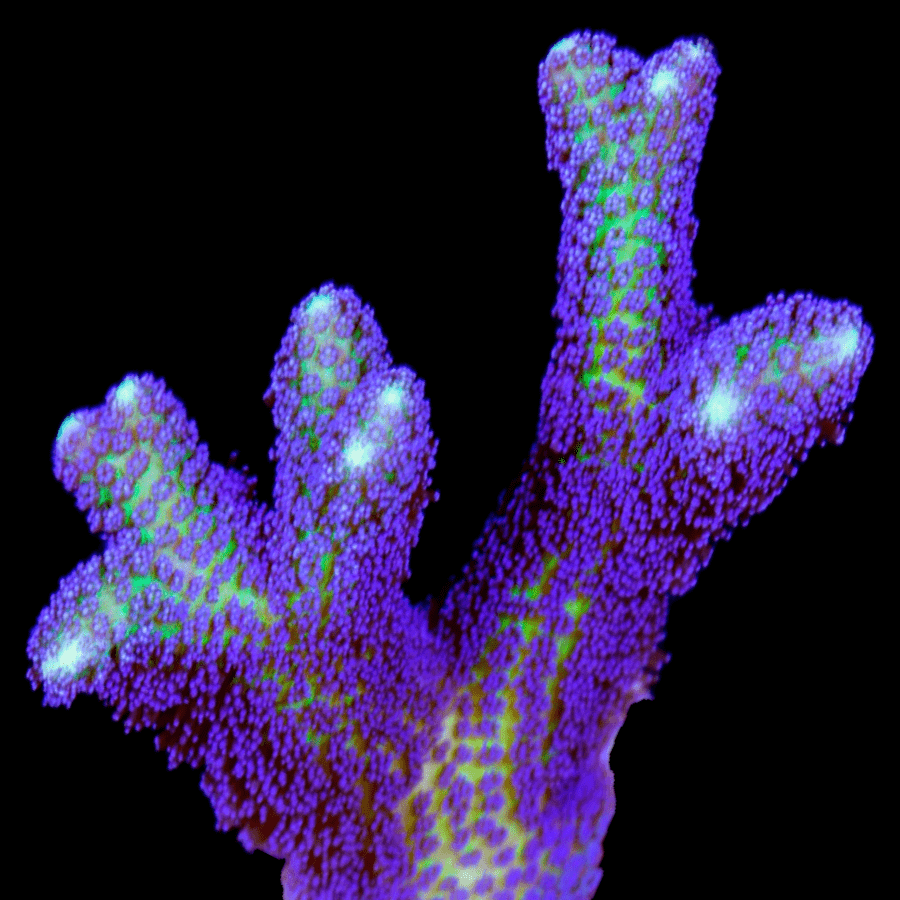FRESH FROM THE FARM! - part 3 - A very short basic guide to keeping corals, plus, a little bit about lighting and coral farming. Ooo arr!
FRESH FROM THE FARM! - part 3
A very short basic guide to keeping corals, plus, a little bit about lighting and coral farming. Ooo arr!
Care advice - General basic advice for corals
Please note
Throughout this article I mention many products and brands. Out of all of these the only one we sell is our own Coral Food 99. My advice is my own personal recommendations, and I do not get paid or receive any promotional gifts etc for recommending any of the products mentioned. By not stocking or selling any of these products myself this means that you know it’s an impartial opinion, as I receive no financial gain by recommending any one of these products.
Lighting
No more than 8 hours of white light per day, with, a short ramp up time of 30 minutes or less. Up to another 8 hours of blue/UV light (no white). At least 8 hours per day of darkness/very low night lighting. Most soft and LPS corals need very little white light. We run most systems at:
White light 8% to 12% power
Red and greens at 2% to 4%.
Blues at 100% to 130% power
UV at 100% to 110% power.
For most soft corals and LPS we find you get best growth and colour at 20-50 PAR, with a colour temperature of around 14,500k.
On all our corals we now only use Hydra 32HD's. They are widely available online. Personally I mostly order from H20 Aquatics and Charterhouse Aquatics (links are provided below).
I recommend using Hydra 32HD’s
Placement for most soft corals and LPS
Low light levels.
Low to medium flow rate.
Placement for Leather corals, GSP and SPS
High to very high light levels.
High to very high flow rates.
Dendronephthya sp.
Placement for NPS (Non-photosynthetic corals)
Generally very low to no light, but, some species such as most Dendo’s will quite happily sit at 400+ PAR.
High to very high flow rates.
Compatibility
Some fish may peck at or eat corals. Some inverts may also do so. Remove any fish or inverts that are harassing the coral.
Feeding
For maintaining and growing corals we recommend target feeding corals at least once a week You may also wish to add liquid coral food too, we recommend use our one: Coral food 99 which will give excellent results (this is available on our website). Most good brands of coral food will do the job.
For NPS corals they are generally best kept in skimmerless systems. We don’t run skimmers on any of our tanks, and I haven’t done so for 20+ years now. For NPS I’d recommend feeding liquid coral food heavily (at least 1ml per 10 litres per day) preferably at night. Setting up a basic automatic dosing system for live brine shrimp naupli is also a good idea, and I’ll cover how to do that in a later article.
If you are looking to commercially farm corals then see Farming corals below.
Water testing & control
I recommend:
TMC or Aqua Medic auto top up units.
DD or Aqua Medic temperature controllers.
Oase heaters.
Hanna salinity checker.
Elos test kits for Phosphate and Nitrate.
Salifert test kits for all other water tests.
Arcadia polyfilter is highly recommended too.
Water quality
All corals require reasonable water quality. Water quality for reef aquariums is divided into 4 levels. To start with just worry about level 1. If you can keep level 1 within range constantly for 4+ weeks, only then start worrying about level 2, and so on.
Salifert test kits.
If you keep everything spot on you could in theory make it to level 4 within 3 months. However, it's a bit like a game of snakes and ladders, in that if one parameter strays out of line, then you go straight back down to that level, and need to complete that level for 4+ weeks before you can go up a level again.
The reason it is like this is very simple. Corals are only really going to use things like KH etc, if they are growing. If the temperature, salinity, nitrates, or phosphates, are not to their liking, or are wandering around too much, they won't really grow much. So unless temperature and salinity, and then also nitrates and phosphates, are all correct then there isn't much point worrying about KH, Calcium or Magnesium.
Worrying about your KH when your nitrates or phosphates are incorrect is a bit like worrying about cleaning your car windscreen whilst your car is tumbling through the air off the side of a tall bridge. Yes, having a clean windscreen is a good idea, but, if your car is tumbling end over end through the air do something about that first, as how clean the windscreen is won't really matter.
pH
Contrary to popular opinion pH is completely irrelevant in marine aquariums unless you are:
Running a bare bottom system.
Dosing copper medications.
Using a large calcium reactor.
Using a slow flow denitrifier (5 metres or more).
Or using very high levels of ozone.
pH is a combination of lots of individual factors, and, not a parameter in it's own right!
Water quality level 1 - Temperature and Salinity.
Temperature 28c to 28.5c / 82F to 83F
Salinity 34.0ppt to 34.5ppt at the temperatures above (temperature affects salinity).
Water quality level 2 - Nitrates and Phosphates
Nitrates of ideally exactly 4ppm.
Phosphates no lower than 0.02ppm and no higher than 0.08ppm.
Water quality level 3 - KH, Calcium, and Magnesium.- Advanced hobbyists only.
Other water parameters generally only matter if all the 4 parameters above are correct or very close to correct. Unless you have an A level grade understanding of water chemistry then dosing KH, Calcium, Magnesium, etc is not something I'd recommend. See our YouTube channel for more detailed advice on many reefkeeping issues (link below).
Also don't meddle with these 3, unless your tank needs 10ml or more of a buffer per day, then generally it's better to not dose at all as the micro instability created will outweigh the more consistent level fall. 10ml per day of buffer may sound like a lot, but, it's really not. A 200L SPS tank that is growing well can swallow 600ml+ of KH buffer, 150ml of calcium, and 50ml of magnesium, per day. Fiddling around micro dosing small amounts generally does far more harm than good. Unless you are getting very high usage rates then maintain levels with increased waterchanges instead which will bring more benefit, for less cost, and far less chance of something going wrong.
KH 6.5 to 7.5, many people do run higher, but, there is little benefit, and at higher levels it's less stable. The only notable exception is with Duncans where a KH of 8+ is advisable.
Calcium should be in ratio with your KH, for example at a KH of 6.5 calcium should be 376ppm. For each 0.5 in extra KH above 6.5 the calcium should be 4ppm higher eg:
KH of 6.5 = Calcium should be 376ppm. - Most coral farms run at 6.5 to 7.0.
KH 7.0 = Calcium 380ppm. - Seawater is is usually 6.5 to 7.5.
KH 7.5 = Calcium 384ppm.
KH 8.0 = Calcium 388ppm. - Up until 10,000 years ago the sea was around 8.0 for millions of years. Some SPS do better at a KH of around 8.0.
KH 9.0 = Calcium 396ppm.
KH 10.0 = Calcium 404ppm.
KH 11.0 = Calcium 412ppm.
KH 12.0 = Calcium 420ppm.
KH becomes very unstable above 12.
SPS can use a lot of KH, but, LPS and Clams mostly use Calcium not KH. If you are finding your KH is falling, it may be because your Calcium is too high or too low and not in balance with your KH (see above), or, your magnesium is too low (see below).
However, unless you have a lot of SPS then chances are the KH is not falling due to being used by the corals, but, is instead being eroded by organic acids. A falling KH in tanks without much SPS (less than 1 orange sized piece of SPS per 50 litres), is more typically a sign of poor filtration or inadequate maintenance. Improving surface movement, maintaining the sandbed better, running filter wool (not socks), using carbon (or Ozone), and improving your water change change regime, will usually solve this.
Magnesium should be at least triple your calcium, so at say 380ppm calcium your magnesium should be 1140ppm or more. You can run magnesium much higher with no issues until you start going over 1,550ppm and even then there are few problems unless you go over 1,700ppm. Generally speaking the animals in your aquarium don't use any noticeable amount of magnesium. The only thing that usually causes magnesium levels to fall is Calcium and KH being out of balance, or Magnesium not being at least triple your Calcium. Falling magnesium levels is usually a sign of problems with KH or Calcium.
Water quality level 4 - Iodine, Strontium, and other parameters - Very advanced reefkeepers only.
Chances are you don't really need to worry about these parameters at all, as they are hard to test for, most tanks use very little, levels that are too low will do little harm, and it's very easy to raise a level too high which can cause the whole tank to crash within hours.
Iodine - Only really necessary to dose if you have a very large amount of yellow SPS such as large yellow Turbinaria, if you are keeping a fully planted macroalgae tank, or running large metal halide light units close to the water surface.
Strontium - Mostly only used by large red SPS colonies, eg large pieces of red Montipora.
Boron - Mostly only used by large colonies of green SPS
Iron - Mostly only used by large colonies of Goniopora, and red leafy Macroalgae (not Cyano).
Lead - May rise to high levels if feeding large amounts of Zooplankton.
Copper - May rise to high levels if feeding large amounts of Mysis/Krill.
Pottasium - Only important in systems rammed full of SPS.
Silica - May rise too high if using poor quality RO water, or, incorrect type of sand/rock.
ORP - May fall too low if the tank contains a lot of large messy fish (typically large Tangs).
Commercially farming corals
For faming corals for sale it is more cost efficient to feed them heavily. When farming corals I typically use around 1ml of coral food per 2 litres of system volume per day, and target feed the corals at least 3 times per day, and with some species such as Lord Howenensis I target feed each head individually up to 8-10 times per day. To maintain water quality I then typically change 10%-20% of the water daily, and then a larger 50%-75% waterchange every 5 days or so.
This level of feeding and waterchanges is not necessary to keep and grow corals, but, if you are looking to commercially farm corals this is the most cost effective way to do so. Running a system this way for commercial growth is the most cost effective way to farm corals as it will grow the most amount of coral for the least amount of cost, however, running this regime is very costly, so only viable if the farm system is heavily stocked.
This requires quite large capital investment, quite high running costs, and is time heavy, so this system is only recommended if farming corals is your main job, and you are on site most of the time, most days. This isn't a system that is suited to part time hours.
Useful links:
Salty Revolution YouTube channel - 200+ short videos on reefkeeping.
https://www.youtube.com/@SaltyRevolution
My Instagram - thousands of images and videos of corals and other reef creatures.
https://www.instagram.com/jamesgoodchildofficial/
Little Fish Aquatics, Norfolk, UK - UK retail shop - Highly recommended.
https://www.littlefishaquaticsuk.com/
H20 Aquatics, Essex, UK. - Shop & online retailer - Highly recommended.
https://h2oaquatics.co.uk/
Charterhouse Aquatics, UK - UK online only retailer - Highly recommended.
https://charterhouse-aquatics.com/
Finest Aquatics, Cheshire, UK - Shop & online retailer - Highly recommended.
https://www.finestaquatics.co.uk/
Bulk Reef Supply YouTube channel (US) - US online retailer - Excellent videos.
https://www.youtube.com/@BRStv
Tidal Gardens (US) - US online retailer - Coral specialists.
https://tidalgardens.com/
Reef Central - US marine forum - Highly recommended.
https://forums.reefcentral.com/
















